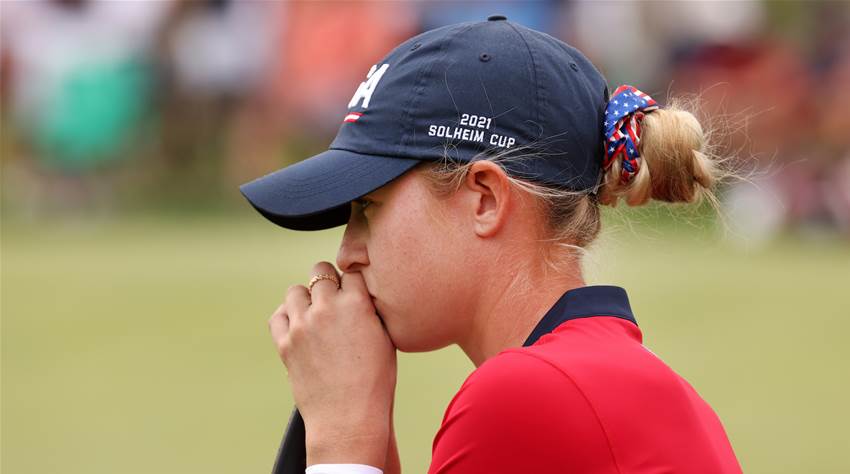No other sport does a rules snafu quite like golf, as evidenced by the ‘debacle du jour’ from the Solheim Cup this past week.
The ‘overhanging ball’ (or not, as your opinion may be) that resulted from Nelly Korda’s eagle putt on the par-5 13th in the day one fourballs sparked a controversy befitting what has so far been a glorious golf spectacle.
But if we zoom out a bit from the specifics of that case, we see pretty quickly why golf is both the greatest game in the world and the most difficult to regulate.
In other sports the questions tend to be pretty straightforward, along the lines of ‘was the ball or player ‘in’ or ‘out’?
But in golf that is rarely the case. The nature of the game – indeed the very appeal of the game – is in its lack of rigidity.
"Ultimately what it all means is that, like life, the rules governing golf are imperfect and they always will be." Rod Morri.
Not only are no two courses the same but no two holes are the same and, indeed, no two players need play any given hole the same way.
The playing surfaces range from tees to fairways to putting greens to hazards (or penalty areas, if you must) to bunkers and any shade of broken ground in between.
In professional golf there might be, at any given time, more than 70 players on the course (all with caddies) facing changing weather conditions which impact the difficulty of the course from one side of the draw to the other.
Balls can be lost, moved, find their way into spectator areas or rubbish bins or up against man-made structures and there needs to be a rule covering every one of these scenarios (not to mention the multitude of differences each of those individual scenarios might throw up.)
And then there’s matchplay (and team matchplay) to account for as well, including all the aforementioned scenarios (and more) while somehow also leaving enough flexibility in the rules to account for as yet unforeseen circumstances.
Which is what transpired on the 13th green at Inverness in the day one four balls.
Europe’s Madelene Sagstrom – out of common courtesy and decency – picked up a ball that nobody believed was going to fall into the hole and threw it back to Nelly Korda.
However, because she picked it up inside 10 seconds when it was judged to be overhanging the hole, the rule states the ball is deemed to have already been holed. Even though it wasn’t. And was never going to be under existing laws of gravity.
Try explaining THAT to a non-golfer (or indeed many long-time golfers, it would seem) in a way that makes sense.
It’s not hard to find people unhappy with the outcome of the incident and it’s easy to understand why.
But what’s the alternative? Any attempt to write a set of rules (there were multiple rules in play in this instance) that would effectively deal with this scenario is all but guaranteed to create an unintended consequence elsewhere.
In this case the rules official who made the call (Missy Jones) is highly respected, as is the TV rules official who deemed the ball was indeed overhanging the hole (Joao Pinto, Tournament Director of the European Tour).
I – and I suspect most of those arguing the toss – have nowhere near enough expertise in the area to argue with these two so the only sensible course of action is to accept they got the call right.
(And for those suggesting Missy Jones had no business getting involved in the ruling in the first place, the truth is she had no choice. Her job definition in this instance was to get involved whether asked to or not).
Ultimately what it all means is that, like life, the rules governing golf are imperfect and they always will be.
But it is the ‘shades of grey’ that make this game the most compelling and addictive in existence and without them – including in the rules – it would be a lesser endeavour.
Related Articles

Column: Spread the Scottish Open’s wings once again

Tough Open start doesn't deter Croker from relishing life in the big league













